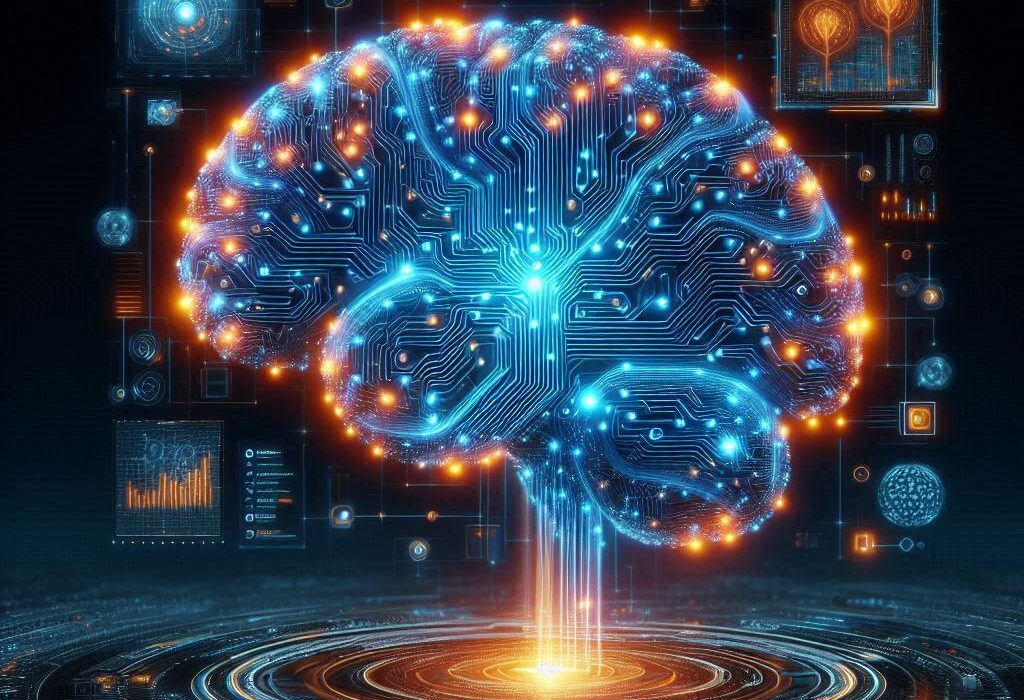The human brain is often described as the most complex object in the known universe. Contained within its folds are nearly 86 billion neurons, each capable of forming thousands of connections. For centuries, the brain was thought of as a rigid organ, much like a machine built once and forever fixed in its architecture. If a part was damaged, if a circuit failed, that was the end of the story. But this belief has given way to a revelation that reshaped neuroscience and changed how we see ourselves: the brain is not static. It is dynamic, adaptable, and capable of change throughout life. This phenomenon is known as neuroplasticity.
Neuroplasticity is the brain’s remarkable ability to reorganize itself, to form new neural connections and pathways, and even to repurpose existing ones. It is the hidden force that allows children to learn languages with ease, stroke survivors to regain abilities once thought permanently lost, and each of us to adapt to new environments, skills, and challenges. To understand neuroplasticity is to glimpse the secret behind human resilience, growth, and transformation.
From Fixed Wires to Fluid Networks
For much of history, scientists believed the brain was like a hardwired machine. The prevailing view, solidified in the 19th and early 20th centuries, was that by adulthood the brain’s structure was set in stone. Learning was possible, yes, but the physical wiring of the brain was thought to be permanent. Damage from injury or disease, it was believed, could never be undone.
This belief began to crumble as curious findings emerged. In the mid-20th century, researchers noticed that blind individuals often developed an extraordinary sense of touch or hearing, suggesting that the brain was reallocating unused visual areas to other senses. Experiments with animals revealed that enriched environments could physically change brain structures. Over time, the evidence became undeniable: the brain could, and did, change.
Today, neuroplasticity stands as one of neuroscience’s most profound insights. It reveals that our brains are not simply shaped by our genes but are continuously molded by our experiences, environments, and behaviors. The once rigid machine is now recognized as a living, breathing system of adaptation.
The Cellular Symphony of Change
At its core, neuroplasticity operates through neurons—the brain’s communication cells. Neurons transmit signals via electrical impulses and chemical messengers called neurotransmitters. Each connection point between neurons is a synapse, and it is here that plasticity unfolds.
When we learn something new—whether it’s a dance step, a mathematical concept, or the flavor of a new cuisine—neurons fire in specific patterns. With repetition, these connections strengthen in a process famously summarized as “neurons that fire together, wire together.” Conversely, unused connections weaken and may even disappear. This process, known as synaptic pruning, ensures the brain remains efficient, keeping only the connections that matter most for our survival and daily life.
But neuroplasticity is not just about strengthening or weakening synapses. Entire brain regions can take on new roles. If one area is damaged, others may step in to compensate. This is why someone who loses part of their motor cortex may, with therapy, regain movement as other brain regions assume control. The cellular symphony of change is both subtle and dramatic, reshaping the very architecture of thought, memory, and behavior.
Neuroplasticity Across the Lifespan
One of the most beautiful truths about neuroplasticity is that it is lifelong. In childhood, the brain is extraordinarily plastic. Young minds soak up languages, motor skills, and social cues with astonishing speed. A toddler learning to walk is not simply gaining strength in muscles but rewiring neural pathways for coordination, balance, and planning.
In adolescence, plasticity remains high, though it begins to specialize. This is why teenagers often excel at learning new instruments or sports, their brains eager to refine specific circuits. For decades, scientists believed that by adulthood, neuroplasticity tapered off sharply. While it is true that plasticity becomes more selective, modern research shows that even in old age, the brain retains an astonishing ability to adapt. Older adults can learn new skills, recover from injuries, and even create new neurons in a process known as neurogenesis, particularly in the hippocampus, the region crucial for memory.
This lifelong capacity means we are never truly fixed in who we are or what we can become. Each experience, from reading a book to forming a friendship, subtly reshapes the neural fabric of our being.
The Emotional Power of Rewiring
Neuroplasticity is not only a scientific concept—it is a deeply human one. It explains how a stroke survivor can relearn how to speak, how a pianist can refine their skill with hours of practice, how trauma can reshape the brain in painful ways, and how healing can bring new patterns of resilience.
The emotional weight of neuroplasticity lies in its duality. On one hand, it offers hope. The brain can recover, grow, and adapt in ways that once seemed impossible. On the other hand, it reminds us that the brain is also vulnerable. Negative experiences, chronic stress, and toxic environments can wire in harmful patterns. Anxiety, addiction, and depression are, in part, consequences of maladaptive plasticity—the brain rewiring itself in ways that hinder rather than help.
This dual nature emphasizes the responsibility we carry in shaping our mental worlds. Every thought repeated, every habit reinforced, every environment we immerse ourselves in is sculpting the architecture of our minds. Neuroplasticity is not neutral—it is shaped by what we give it.
Neuroplasticity in Learning and Skill Development
When you sit at a piano for the first time, your brain fumbles, unfamiliar with the coordination required. Fingers stumble, timing falters. But with practice, neurons strengthen their connections, building circuits that eventually make playing second nature. This is neuroplasticity at work in learning.
The same principle applies whether you are mastering a new language, learning to ride a bike, or solving complex equations. Each repetition engrains patterns deeper into the brain, transforming conscious effort into unconscious competence. This is why practice matters, not as a cliché but as a biological truth.
But neuroplasticity also explains why unlearning is difficult. Habits, once carved deeply into neural pathways, resist change. To break an old habit or learn a new one, the brain must weaken existing circuits while strengthening new ones, a process that requires effort, patience, and persistence.
The Healing Potential of Neuroplasticity
Perhaps the most inspiring aspect of neuroplasticity is its role in recovery. Consider a stroke patient who has lost the ability to move their arm. Traditional thought once deemed this loss permanent, as the motor cortex region was damaged. But through therapy and repetitive training, other parts of the brain can assume control, restoring function.
Similar processes occur in cases of brain injury, sensory loss, or even psychological trauma. Neuroplasticity allows the brain to find new routes, to adapt in ways that defy expectations. Modern rehabilitation programs harness this power, using targeted exercises, virtual reality, and brain stimulation to encourage rewiring.
Even mental health therapies rely on neuroplasticity. Cognitive-behavioral therapy, mindfulness, and meditation all leverage the brain’s ability to rewire itself. By practicing new thought patterns, patients literally reshape the circuits associated with fear, rumination, and self-doubt. Healing, then, is not only emotional—it is biological.
The Role of Environment and Experience
Our brains are not shaped in isolation. They are sculpted by the environments we inhabit and the experiences we undergo. A child raised in a stimulating environment rich with play, learning, and social connection develops stronger, more flexible neural networks. Conversely, environments marked by neglect or trauma can limit plasticity, leaving deep scars.
Even as adults, the principle holds true. Travel, new hobbies, meaningful conversations, and challenging work all enrich neuroplasticity, keeping the brain vibrant. Conversely, monotony, isolation, and chronic stress shrink opportunities for growth. Neuroplasticity reminds us that the environments we choose and the people we surround ourselves with matter profoundly.
The Dark Side: When Plasticity Works Against Us
Neuroplasticity is often celebrated for its uplifting possibilities, but it is not always beneficial. The brain can rewire itself in ways that perpetuate harm. Addiction is one striking example. Drugs and compulsive behaviors hijack reward circuits, reinforcing neural patterns that trap individuals in destructive cycles. Chronic pain, too, can be a result of maladaptive plasticity, as the brain amplifies pain signals long after an injury has healed.
Even negative thought patterns—self-criticism, worry, fear—become ingrained through repetition. In these cases, neuroplasticity becomes a double-edged sword, teaching us that change is possible in both directions. Awareness and intentional practice are necessary to steer plasticity toward growth rather than decline.
Neurogenesis: The Birth of New Neurons
For decades, scientists believed we were born with a finite number of neurons, which gradually died off with age. But research in the late 20th century overturned this assumption. Neurogenesis—the creation of new neurons—occurs throughout life, particularly in the hippocampus. These new cells are integrated into existing circuits, enhancing memory and learning.
Neurogenesis is influenced by many factors. Physical exercise, especially aerobic activity, has been shown to boost the birth of new neurons. Learning, novelty, and enriched environments further support the process. On the other hand, chronic stress and depression can suppress neurogenesis, highlighting once again the deep ties between mental health and biology.
Harnessing Neuroplasticity in Daily Life
Understanding neuroplasticity is empowering because it means we are not passive victims of our brains. We can actively shape the architecture of our minds. Simple practices—regular exercise, continuous learning, meditation, creative expression, and strong social bonds—encourage healthy plasticity.
Even more importantly, cultivating awareness of our habits and thought patterns allows us to steer plasticity deliberately. Repetition, focus, and perseverance are the raw materials with which the brain sculpts itself. In this sense, every choice becomes a form of brain training, every day a chance to reinforce resilience, wisdom, and compassion.
The Future of Neuroplasticity Research
As neuroscience advances, the promise of harnessing neuroplasticity grows. Technologies such as brain-computer interfaces, neurofeedback, and non-invasive brain stimulation open new avenues for therapy and learning. Researchers are exploring how to guide plasticity more precisely, accelerating recovery from injury, enhancing memory, or even preventing neurodegenerative diseases like Alzheimer’s.
But these advances also raise profound questions. How far should we go in enhancing the brain? What are the ethical boundaries of manipulating neuroplasticity? As with all powerful discoveries, the challenge lies in balancing possibility with responsibility.
Conclusion: The Ever-Adapting Mind
Neuroplasticity is one of the most hopeful discoveries in science. It tells us that the brain is not fixed but fluid, not a machine but a living symphony of change. It explains our capacity to learn, heal, adapt, and grow. It reveals that our minds are works in progress, sculpted not only by genes but by experience, environment, and intention.
To embrace neuroplasticity is to embrace possibility. It is to recognize that we are not trapped by past mistakes, not limited by old habits, not bound by injury or circumstance. Our brains are always changing, always becoming. With awareness, practice, and compassion, we can shape that change toward resilience, creativity, and wisdom.
The story of neuroplasticity is, ultimately, the story of human potential. The brain rewires itself—and in doing so, it rewrites us.






